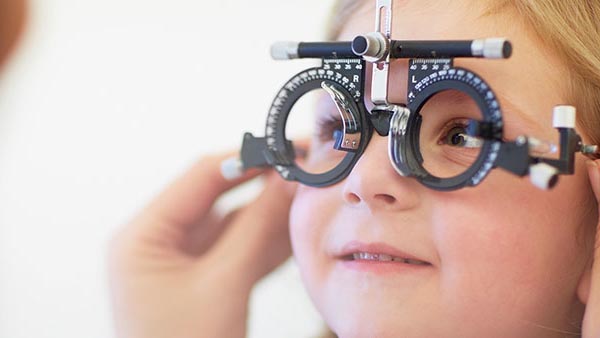Paediatric Ophthalmology
Children are not matured as adults. Their eyes, visual needs, and disorders are entirely different than from those of adults. Since they are rapidly growing, and are yet to develop fully mature eye-brain coordination, disorders of vision in children require special attention and focus. This is why paediatric ophthalmology has evolved as a specialized discipline, and indeed a subspecialty in ophthalmology.
The paediatric ophthalmologist is responsible for taking care of the visual attention needs of the children, and ensuring a proper visual development regarding both function and structure (including cosmesis).
How is the Eye of the Child Different?
- The brain-eye connections are not fully made, so any deprivation of vision in early childhood, if it remains uncorrected, can result in lazy eye or amblyopia. These means that the visual potential of the child becomes limited, and even proper corrective glasses cannot help in later help. Amblyopia therapy is critical in the early years of life
- The congenital anomalies or disorders of development show up in the early years of life. These can range for refractive errors which merely require corrective glasses, to squint or misalignment of eyes, congenital nasolacrimal duct block, ptosis or lid droop and even cataract and glaucoma.
- Infants who are born premature, of low birth weight or who have a prolonged tumultuous stay in the newborn nursery, are at risk for a disease called Retinopathy of Prematurity, RoP. RoP is potentially vision threatening and must be screened for in these high-risk
- In settings of malnutrition, children are susceptible to Vitamin A deficiency, and its attendant eye problems including dry eye, corneal ulcers, and even blindness. Fussy and choosy eaters may also sometimes be deficient in some micronutrients despite being healthy and well fed otherwise.
- Children, because of their active lifestyle and playing outdoors are more prone to eye allergies and trauma.
- TV viewing, increased screen time and video games have given rise to a particular set of concerns in this age group.
- There is a set of eye tumors and malignancies that are typical of infancy and childhood like retinoblastoma.
What are the Symptoms &Signs of Eye Problems in Children?
-
Reading disability and problem in school in copying what is written on the board could be an indication of poor vision
-
Any squint or misalignment of the eyes
-
Any frequent headaches, eye rubbing, red eye, recurrent eye infections and watering from eyes
-
Any family history of eye disorders including the need for glasses (refractive errors), can be passed from one generation to another and must be evaluated early on in life

.png)